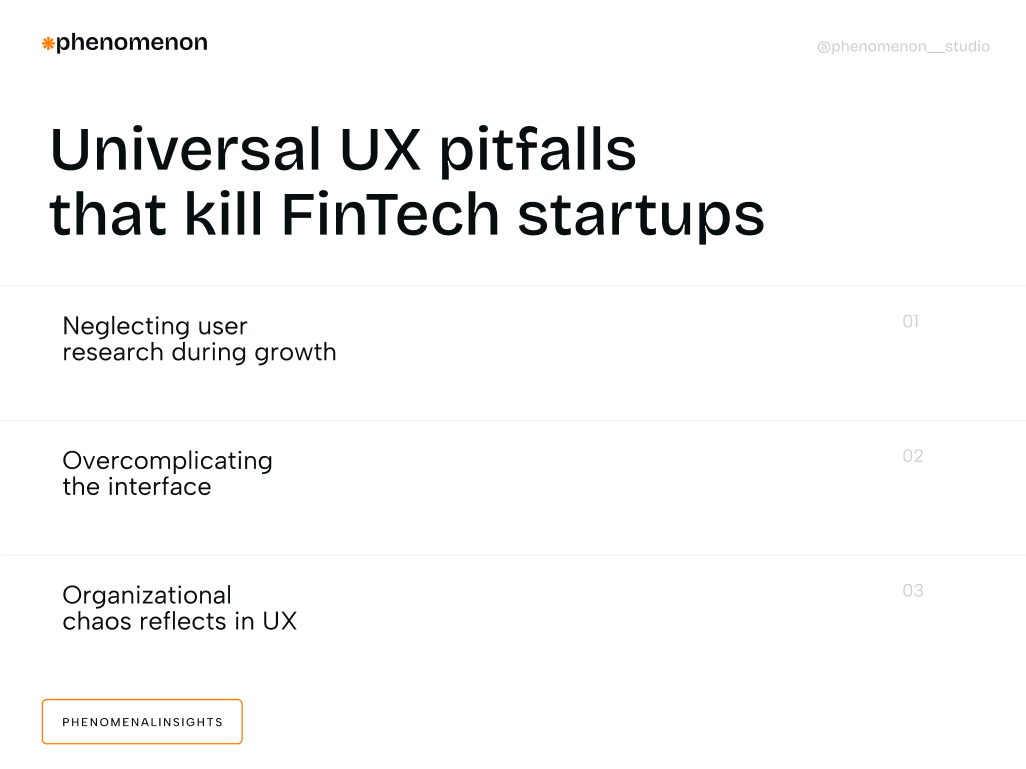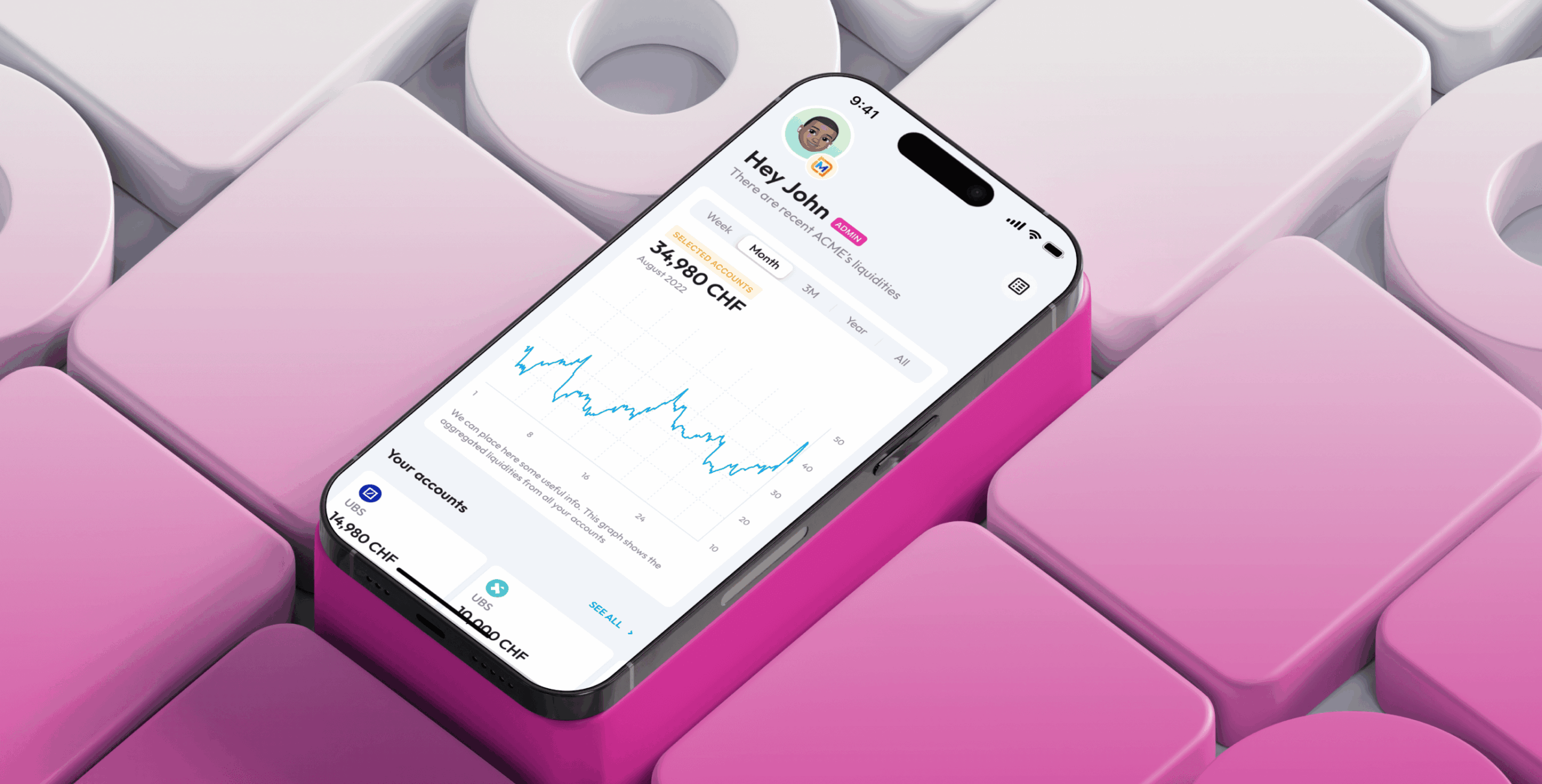Discover the critical UX pitfalls that derail FinTech startups during scaling. Learn proven strategies to build trust, ensure compliance, and create seamless financial experiences.
Building a FinTech MVP is just the beginning. Unlike a full-scale product, an MVP is designed to validate your idea before committing resources to a complete, large-scale implementation. The real challenge starts when you scale from prototype to full product. Most FinTech startups stumble during this critical transition, and user experience failures are often the culprit.
Studies show that 73% of users will switch financial providers for a better digital experience. With FinTech investment reaching $310 million despite economic headwinds, the competition is fierce. Your UX strategy can make or break your startup’s future.
When building an MVP, it’s crucial to identify and prioritize the core features and essential features that deliver your core value proposition efficiently. Focusing on these aspects ensures your product is viable, functional, and aligned with user needs from the start.
This step guide examines the most common UX pitfalls that derail FinTech companies during scaling and provides actionable solutions to help you avoid them.
Introduction to FinTech Startups
FinTech startups are transforming the financial services landscape by harnessing technology to solve age-old financial challenges in new ways. The secret to their rapid rise often lies in their approach to mvp development. By focusing on building an MVP—a minimum viable product—FinTech startups can quickly test their ideas with real users and validate their core assumptions before investing significant resources. This approach allows startups to bring a viable product to market faster, saving both time and money while minimizing risk. Through real-world testing, startups gain valuable insights into user behavior and market demand, helping them refine their product and increase their chances of success in the competitive financial sector. In a market where innovation moves at lightning speed, building an MVP is the smartest way for FinTech startups to turn bold ideas into real, impactful products.
The Hidden Complexity of Scaling FinTech Products
Why MVPs Create False Confidence
Your MVP proved the concept worked. Users signed up, transactions processed, and investors took notice. But this early success can mask the exponential complexity that comes with scaling. An MVP in fintech is a minimum viable product specifically designed for the financial technology sector, focusing on regulatory compliance, security, and user feedback, which sets it apart from MVPs in other industries.
Minimum viable products are built for validation, not volume. They are designed to validate the core idea before scaling. When you move from hundreds to thousands of users, your quick fixes become permanent problems. Database queries slow down. Authentication systems crash. Simple workflows become user nightmares.
The financial stakes amplify every UX issue. A slow loading screen in a social app is annoying. In a trading platform, it costs users money and destroys trust instantly. The MVP helps test the foundational idea before moving to full-scale development.
The Non-Linear Growth Challenge
Many startups plan for linear growth but face exponential complexity. Adding features, users, and regulations creates a web of interconnected challenges that your MVP architecture cannot handle.
Technical debt accumulates quickly. Those “temporary” workarounds become the foundation of your product. Following a structured MVP development process helps mitigate technical debt and prepares your platform for non-linear growth. When systems break under load, users abandon your platform for competitors who invested in scalable architecture from day one.
Understanding Market Demand in Financial Services
For FinTech startups, understanding market demand is the foundation of building products that truly resonate. The financial services industry is filled with pain points—inefficient processes, lack of transparency, and outdated user experiences. Successful fintech mvp development starts with identifying these gaps and crafting a value proposition that addresses real user needs. By engaging with their target audience and collecting user feedback from day one, startups can ensure their MVP solves genuine problems and stands out in a crowded market. Iterative development, based on user feedback, allows for continuous improvement and alignment with evolving market trends. At the same time, regulatory compliance—covering standards like PCI DSS and GDPR—must be built into the product from the outset. This dual focus on user needs and compliance ensures that FinTech products are not only innovative but also trustworthy and ready for scale.
Universal UX Pitfalls That Kill FinTech Startups

Neglecting User Research During Growth
Success breeds assumptions. Many startups stop conducting user research after their MVP gains traction. They assume they know what users want and build features based on internal opinions rather than external data. Engaging early users and early adopters is crucial at this stage, as their feedback and validation help refine assumptions and guide product growth.
This disconnect leads to feature bloat and misaligned priorities. Users struggle with interfaces designed for imaginary problems while their real pain points remain unsolved.
Solution: Establish continuous research cycles. Interview users monthly. Track behavior data weekly. Create feedback loops that inform every product decision.
Overcomplicating the Interface
Pressure from stakeholders and investors often drives feature overload. Every department wants their functionality front and center. The result is cluttered interfaces that overwhelm users.
Cognitive load increases with every additional button, menu, and option. Users came to your FinTech app to solve specific financial problems quickly. Complex interfaces slow them down and create friction at every step.
Solution: Implement progressive disclosure. Show users only what they need for their current task. Use clear information hierarchy and prioritize core user journeys over edge cases.
Organizational Chaos Reflects in UX
Scaling teams without clear processes creates internal chaos that users experience directly. Knowledge silos form. Communication breaks down. Nobody owns the complete user experience.
Design inconsistencies emerge across your product. Different teams build different patterns. The user experience fragments as your organization grows.
Solution: Establish design systems early. Create cross-functional teams with clear ownership. Implement regular design reviews and maintain documentation that scales with your team.
FinTech-Specific UX Challenges That Amplify Problems
The Security-Experience Paradox
Financial apps must balance bulletproof security with seamless experience. Heavy-handed security measures drive users away. Weak security destroys trust and invites attacks.
Financial companies face 300 times more cyberattacks than other industries. Your users know this. They expect protection but hate friction. Traditional authentication methods feel outdated and cumbersome. Advanced fraud detection is now an essential security measure in fintech applications, helping to identify and prevent suspicious activities without disrupting the user experience.
Solution: Implement adaptive authentication that analyzes user behavior. Use biometric options like fingerprint and face recognition. Make security features feel protective rather than punitive.
Regulatory Compliance Creates UX Friction
Anti-Money Laundering (AML) and Know Your Customer (KYC) requirements directly conflict with smooth onboarding. Best practices suggest removing barriers to entry. Regulations demand identity verification before financial activity.
46% of FinTech startups face fines due to compliance errors. The pressure to satisfy regulators while maintaining user experience creates an ongoing tension. Payment processing features must also meet strict regulatory requirements, such as PCI DSS, which impacts UX design and adds another layer of compliance to consider.
Solution: Design tiered verification systems. Allow basic functionality with minimal verification. Require additional steps only when transaction limits increase or features expand.
Financial Jargon Alienates Users
Many financial apps assume users understand complex terminology. Terms like “cash flow,” “gross profit,” and regulatory language confuse average users. Banking websites often read worse than classic literature.
This language barrier creates anxiety when people manage their money. Users abandon applications they cannot understand or navigate confidently.
Solution: Use plain language throughout your interface. Provide tooltips for unavoidable technical terms. Include visual explanations and real-world examples to clarify complex concepts.
Accessibility Gets Overlooked
98.1% of websites fail basic accessibility standards. FinTech apps often ignore users with disabilities, missing significant market opportunities and failing legal requirements.
Accessibility problems compound in financial applications where precise interaction is critical. Screen reader compatibility, high contrast options, and clear navigation become essential for inclusive design.
Solution: Test your product with assistive technologies. Implement high contrast color schemes. Use clear, concise language and ensure keyboard navigation works throughout your application.
The Real Cost of UX Failures in FinTech
User Abandonment Compounds Quickly
88% of users will not return after a negative experience. In FinTech, this abandonment happens faster and costs more. Complex onboarding alone causes 68% of users to quit during signup.
High churn rates force increased spending on customer acquisition. You must constantly replace lost users instead of growing your base. This cycle drains resources and stunts growth.
Trust Erosion Spreads Rapidly
One security incident, failed transaction, or hidden fee can destroy months of trust-building. Users share negative financial experiences more frequently than positive ones. Reputational damage spreads through reviews and social media.
Financial trust, once broken, rarely returns. Users move to competitors and warn others about their experience. Recovery requires significant time and resources.
Regulatory Penalties Drain Resources
Compliance failures result in fines, sanctions, or complete shutdown. Resources diverted to address regulatory issues stifle innovation. Teams focus on fixing problems instead of building features.
The indirect costs often exceed direct penalties. Legal fees, consultant expenses, and delayed product launches compound the financial impact.
Strategic Solutions for Successful UX Scaling
Implement Agile, User-Centered Development
Adopt iterative design processes that include user feedback at every stage. Create user stories that drive development priorities. Conduct sprint-based design reviews to catch issues early.
Continuous testing prevents problems from reaching production. Prototype new features and validate them with real users before full development begins.
Make Security Feel Seamless
Transform security from a barrier into a trust-building feature. Use progressive disclosure to reveal sensitive information only when needed. Implement gamification that rewards users for enabling security settings.
Keep biometric data on user devices and transmit only secure tokens. Combine multiple authentication methods for stronger protection without additional user burden.
Build Cross-Functional Collaboration
Create teams that include business professionals, designers, and developers working together daily. Establish clear communication protocols and decision-making processes.
Regular stand-ups address issues before they become problems. Clear escalation paths prevent teams from getting stuck or working at cross-purposes.
Use Data for Continuous Improvement
Track meaningful user behavior metrics, not vanity numbers. Establish KPIs that evolve as your product scales. Create multiple feedback channels to gather ongoing user input.
Personalize experiences based on observed behavior patterns. Use data to identify friction points and validate solutions before implementation.
Go-To-Market Strategy: Launching with UX in Mind
A successful go-to-market strategy for FinTech startups hinges on delivering a user-friendly experience from the very first launch. A great example of this approach is our project Sway Finance, a cash management application for SMBs. We designed and launched an MVP in just 3 months, allowing the client to generate revenue ahead of schedule and validate key market assumptions early on.
From the start, we focused on creating an intuitive, frictionless user experience—helping users easily track expenses, manage budgets, and consolidate data from multiple bank accounts. Thanks to this, the client gathered valuable feedback from early adopters, refining their value proposition and feature set based on real user needs.
This case shows how prioritizing UX and building real-time feedback loops empowers FinTech startups to quickly gain trust, adapt to market demands, and grow strategically. Combined with a robust marketing plan—leveraging social media, content marketing, and paid campaigns—such an approach sets the stage for long-term success and scalability.

Fundraising and Growth: The UX Advantage
In the race to scale, FinTech startups that prioritize user experience gain a powerful edge—especially when it comes to fundraising and growth. Investors are drawn to products that demonstrate a deep understanding of their target audience and deliver a user-friendly, intuitive experience. A well-designed product not only attracts funding but also drives user engagement and retention, fueling sustainable growth. As startups expand into new markets and add features, maintaining a focus on UX ensures that products remain accessible and relevant to users. This commitment to user-centric design helps FinTech startups stand out in a crowded market, build lasting trust, and achieve long-term success. By making UX a core part of their growth strategy, FinTech startups can turn early traction into industry leadership.
Your Next Steps to UX Success
The transition from MVP to mature FinTech product tests every aspect of your organization. User experience challenges multiply in the financial sector due to security requirements, regulatory compliance, and the critical need for trust.
Success requires proactive planning, continuous user engagement, and holistic product development. Companies that master secure, compliant, and intuitive financial experiences build lasting competitive advantages.
Start by auditing your current UX against the pitfalls outlined above. Identify your biggest risks and create action plans to address them systematically. The FinTech companies that survive and thrive will be those that treat user experience as a core business strategy, not an afterthought.













